Let’s face it; these are strange days. Millions of people are still not back to work full time, and those that are will be playing financial catchup for months or years. On top of that, grocery prices are climbing. Whether you lost your job due to the pandemic, you’re retired and living on a fixed income, or you are just trying to save some money. I want to help. For the next couple of weeks, Monday’s here at Chef’s Notes will be dedicated to cooking and eating on a budget. The idea is to cut back on grocery spending without giving up flavour or quality. It seems crazy, I know, but we can do it.
This series will mostly focus on recipes and dishes that you can make with budget ingredients, but today, we are going to look at grocery budgeting as a whole. What it is and how to do it. In all honesty, this series is as much for me as it is for you. I am not great at budgeting, so we will learn this together.
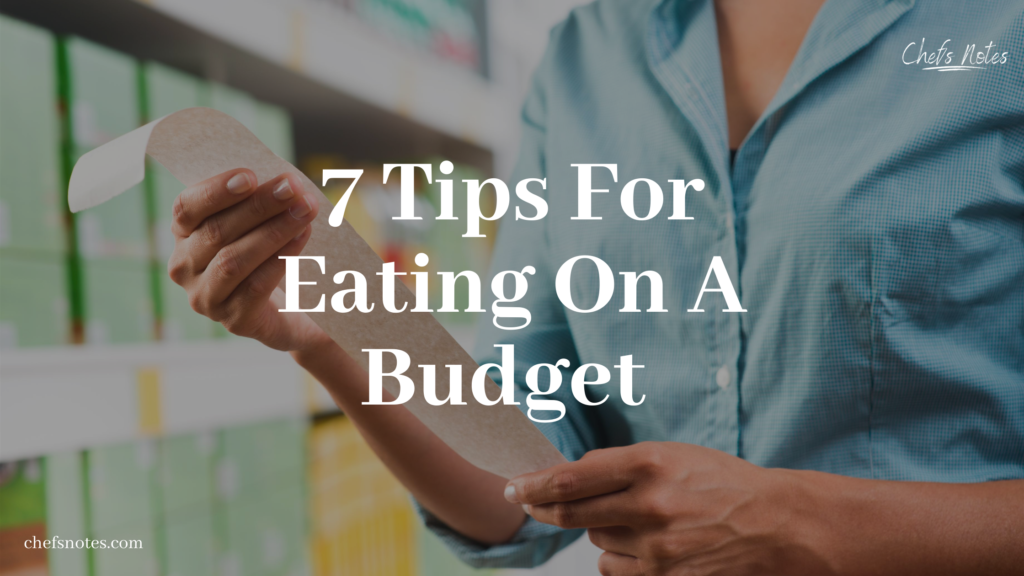
Introduction to Grocery Budgeting
Throughout this series, I am going to use my grocery spending as an example. I know how much I have been spending (I say “I” because since the pandemic hit, I do all the grocery shopping) and that I need to cut back. I think a real example is better than a hypothetical one, so every week of this series, I will break down my grocery spending and how I did with my budget.
What is my budget?
I did some research to find out what the average Canadian family spends on groceries. I found a Global News article from 2017 that says the average Canadian family of four spends about $220 a week on groceries. However, a lot has changed in the time since that article was written. Last December, Dalhousie University released a report saying that the average cost of food in Canada was going to go up by between 2% to 4%, that report was before COVID-19. I can’t find any studies or real information on how the pandemic has altered grocery prices,. Anecdotally, things seem more expensive.
If we take the 2017 numbers from Global and add the high range of increase that Dalhousie was predicting for 2020, plus add another 2% for the years in between, we get a weekly average budget of $233.37 for a family of four. The Global article breaks the budget down by family member which works out to be about 28% ($65.35)* of the budget for Dad, 24% ($56.01) of the budget for Mom, 32% ($74.68) for a teenage boy, and 16% ($37.34) for a young girl (4-8 years old). I don’t have a teenage boy or a 4 to 8-year-old girl. I do have a 10-month-old baby who I assume eats (or throws on the floor) about 12% of our grocery budget. So, for my family of three, our budget based on those numbers should be around $148.72 per week. That number will be my goal from here on out.
*percentages include the forcasted 4% incrase for 2020 plus an additional 2% increase total for the years between 2017 and 2020
What I currently spend on Groceries
From Sunday, August 9th, to Sunday, August 16th, I spent $406.18 at the grocery store. Now, that seems like a lot, and it is, but there are a few caveats in there. One, we bought diapers, which were $29.99, and I had to test a bunch of recipes for a project I’m working on that cost $107.80. So, what I actually spent on groceries last week was about $268.39, which puts me about $119.67 ($268.39 – $148.72 = $119.67) over what I should be spending. It looks like I have some work to do.
I should point out that included in my grocery budget are all the meals you see here on Chef’s Notes, on my Instagram, and when I appear on CTV. Those things can kind of skew my numbers a bit. I think it is valuable to stick to the budget, but I also believe that it is important to provide quality recipes and posts. That means that I sometimes have to go over the budget a little (or more than a little) for a blog post. I’m alright with that as long as it is within reason.
What is a Grocery Budget and How Do You Make One?
Before we move on to the 7 Tips For Eating On A Budget, let’s first clarify what a grocery budget is and how to make one. A grocery budget is a realistic weekly, monthly, and yearly spending limit you set for yourself to spend on groceries. Your budget can be set based on averages as I did with mine above, or you can look back at your grocery spending over the last six months, figure out what you can and cannot cut, and build your budget based on that. We will get into more detail in a minute.
Now that we are all on the same page, let’s finally move on to our 7 Tips For Eating On A Budget.
7. Keep an Inventory of Your Kitchen

Knowing what you do and don’t have in your kitchen is an essential key to understanding what you should and shouldn’t buy. You don’t have to be a tyrant about this, but you should, at the very least, go through your kitchen entirely before you go to the grocery store. It helps if you have some inventory sheets made up. I’ve made some for site members, which can be downloaded for free from the member’s downloads page. You can become a member for free here.
A useful inventory sheet breaks your kitchen into sections like “Fridge,” “Cupboard,” and so on. Ideally, you have on the sheet everyday things you have on hand like Milk, bread, salt, pepper, etc. With the sheet in hand, you take ten minutes and go through your kitchen, seeing what you have, what you are low on, and what you don’t have. You build your shopping list off of the inventory sheet and your meal plan, which we will cover in a minute.
Keeping an inventory of your kitchen does not have to take a lot of time, and it does not have to be complicated. The benefits of doing this greatly outweigh any annoyance and inconvenience.
6. Shop the Flyers
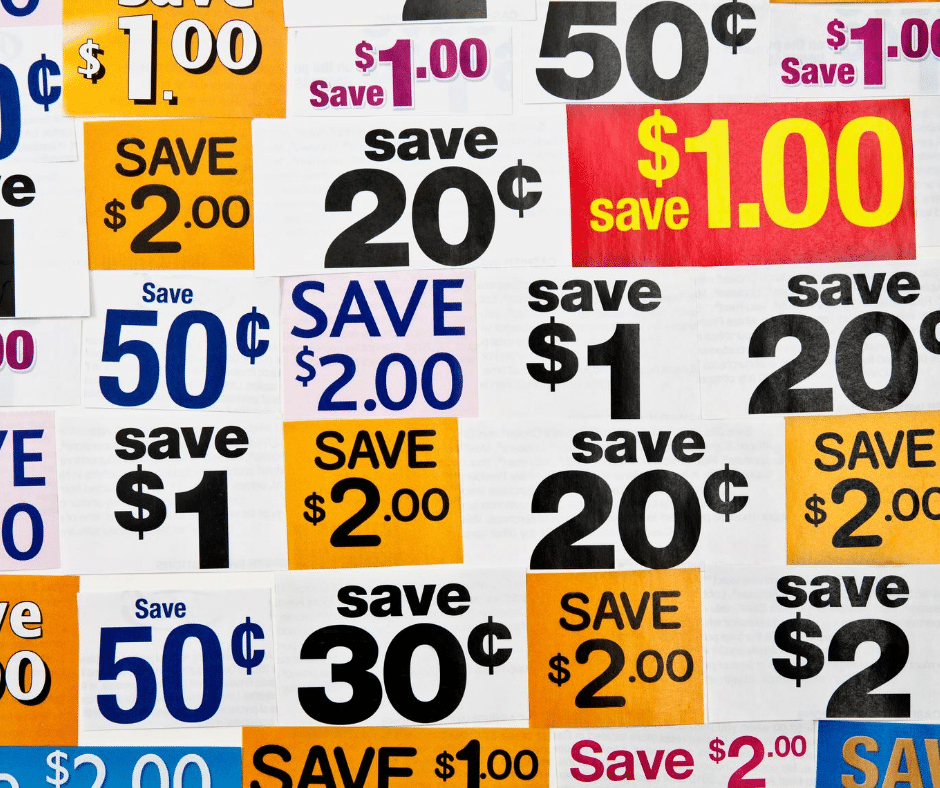
If you live in or near a town or city, there is a good chance that there are at least two grocery stores within a few minutes of each other. Most people will go to one store or the other, but I think it is better to go to both. Use the flyers to help make your meal plan, then go to one store for the things they have on sale that you want and go to the other store for the things that they have on sale. The more you do this, the more you will get a feel for the slight differences in the prices of everyday items between the stores. You would think that pasta would be the same price at two grocery stores that are within a few blocks of each other, but that isn’t always the case.
5. Meal Plan
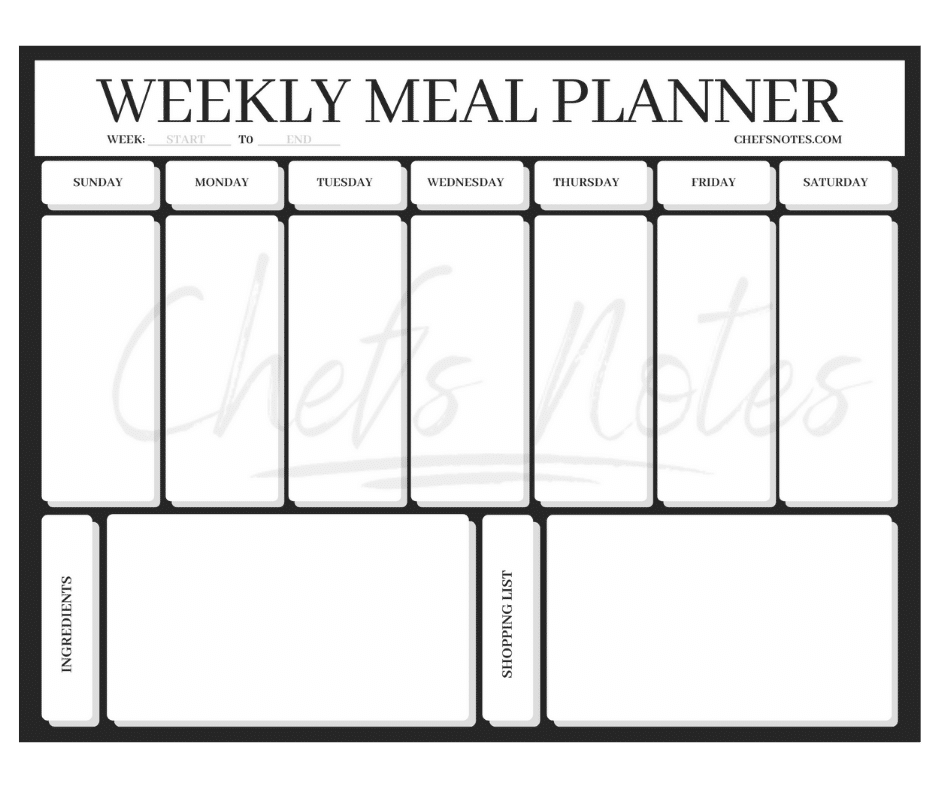
Meal planning is the most critical thing you can do to eat on a budget. Use the flyers and your kitchen inventory to build a meal plan for your week. This will only take a few minutes. Then stick to it. Include all three meals of the day plus snacks. Be honest with yourself when planning your meals and your snacks. Write down what you are really going to eat, what you are going to snack on and work snacks into your budget. If you try and cheat, you will end up going to the corner store for some treats and blow your budget. There is a printable weekly meal planning template for members of the site. You can become a member for free here.
4. Plan your grocery store trips

Nowadays, a lot of grocery stores let you shop online. I prefer to pick out my fruits, vegetables, and meats, so I don’t use the shopping feature in the same way that most people do. I use it to plan out my trip to the grocery store and to help build my budget. The online shopping section of your local grocery store’s website will show you what things cost, so you can know what you are spending before you go. You can also use the online shopping section of the store’s website to help cost out and budget your meal plan.
3. Buy In Bulk When It Makes Sense
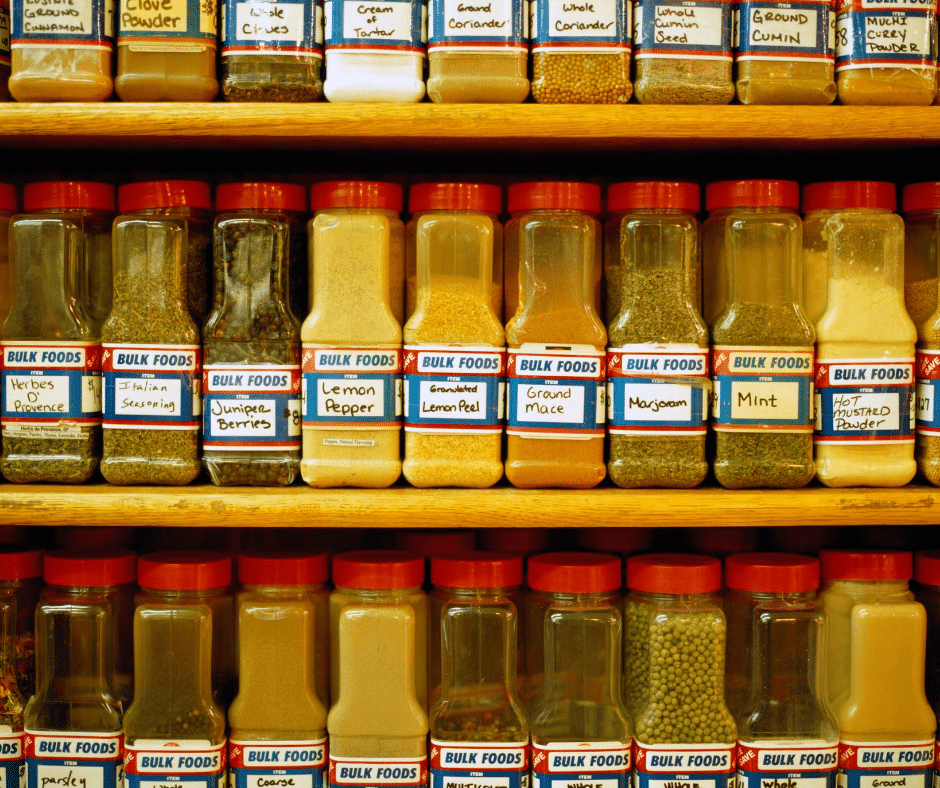
Buying in bulk is a great way to save money, sometimes. It is also a great way to spend a lot of money unnecessarily. For example, if you like white rice, it is great to buy it in bulk. It will last for a very long time. Brown rice, however, has a much shorter shelflife than white rice. So, unless you plan on eating brown rice for every meal for the next two months, it probably isn’t a great idea to buy it 20 kgs at a time.
Check Your Math
When buying in bulk is also important to make sure that the math makes sense. It doesn’t always. The easiest way to break the numbers down is to divide the unit size by the cost. If 20 kg of rice costs $50, then each kilo costs $2.50. The average suggested portion of dried rice is about 9g. There are 1000g in a kilo, so each gram equals $0.0025, meaning a single portion of rice is about $0.02. Compare that to a small (500g) bag of rice that costs $6.00. That same 9g portion now costs $0.10 or five times as much.
Think about chocolate for a second. I needed to buy chocolate the other day. The store had packages of semi-sweet baker’s chocolate squares on sale for $2.00 off per box, but I had to buy more than one to get the deal. It seemed like a good deal at a glance, but was it? Right beside the baker’s chocolate, there was a 1kg bag of semi-sweet chocolate chips, not on sale that cost $12. On the surface, the baker’s chocolate seemed like a better deal, but each package of baker’s chocolate was only 225g. The total price for two boxes (the minimum number I needed to buy to get the deal) would have been around $9. That is fantastic when compared to the regular price of the baker’s chocolate, but it is terrible when compared to the bag of chocolate chips. Even with the deal, 1 kg of baker’s chocolate would have cost $20. Did I need 1 kg of chocolate at that moment? No. Will I use it before it expires? Yes, I will. So, even though the baker’s chocolate was on sale, it made much more sense to buy the bulk bag of chocolate chips despite having to spend more money in the moment.
Divide bulk prices over multiple weeks
One vital thing to keep in mind when buying in bulk is that the price of the bulk item needs to be extrapolated over multiple grocery budget weeks. Looking back at the chocolate for a second, I did not need 1 kg of chocolate for what I was cooking. Even though the baker’s chocolate was more expensive per gram, it would have cost me less money to buy one package rather than the chocolate chips. But because I will be using chocolate again soon, it made more sense to buy the more expensive item. So, let’s say I used 250 g (or one-quarter) of the chocolate chips for what I was making. The price I would subtract from my grocery budget would be one-quarter of the total cost of the chocolate chips, not the total cost. That means that even though I spent $12 on the chocolate, only $3 came off of my grocery budget. But, that also means the next time I use the chocolate chips, whatever I use has to come off that week’s budget. In four weeks, if I use another quarter of the bag of chocolate chips, I have to make sure to subtract $3 from that week’s grocery budget to cover the cost of that chocolate. I know that this may seem complicated, but it is important, so if it is at all unclear, go back and reread this paragraph.
I find that with budgeting and buying in bulk, especially, it is best to think about the larger picture. Focus on the day to day, week to week, but keep the whole month or year in mind. A big bag of rice is going to cost you $50, but it will last you a few months. Don’t beat yourself up too much if you go over budget a little on weeks when you buy bulk items. It will work out over time as long as you are conscious of it.
2. Buy Off Brand

Store brands and off-brand products are often much cheaper than name brand products. But, if you hate off-brand ketchup and are never going to use it, it doesn’t make much sense to buy it. If there is a name brand that you just have to have, then go for it. But, if you can try and buy it when it is on sale. If it is an item with a long shelflife like ketchup, buy a few at once. As long as you don’t buy more than you can use before it spoils, it makes sense. Buy off-brand when it makes sense for you.
1. Only shop once a week
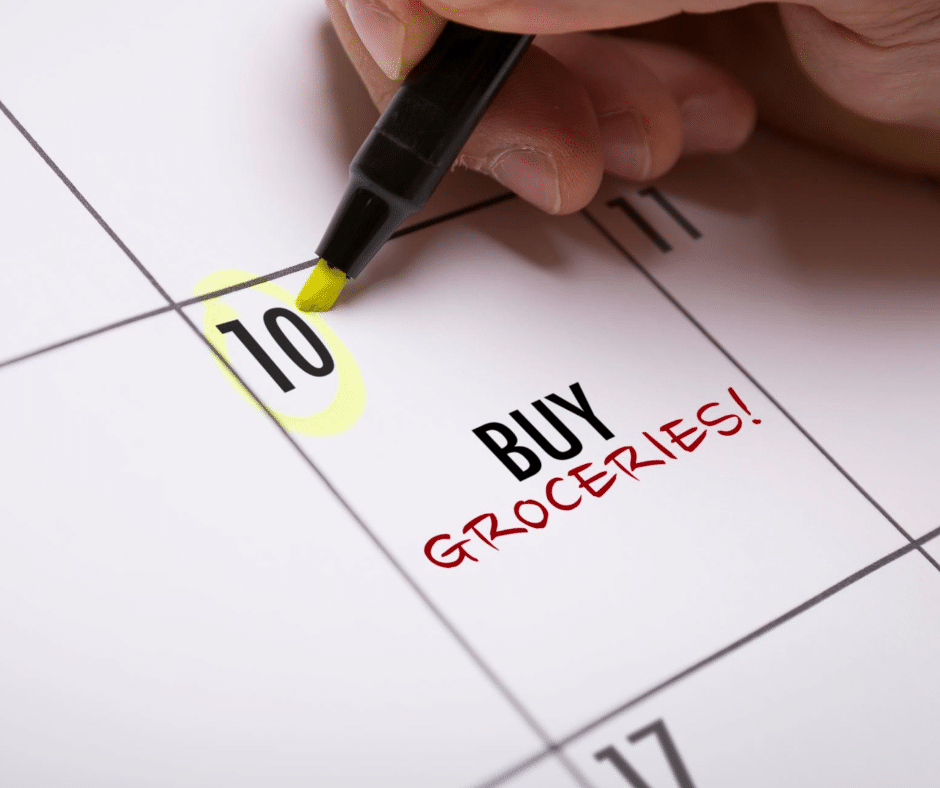
A lot of research, time, effort and money has gone into designing your grocery store experience. The goal of those efforts is to get you to spend as much money as you can. One thing I’ve noticed over the years is that the more time I spend in the grocery store, the more money I spend. That is not an accident. There is always something small that you see that you treat yourself, too or something you’d never thought you needed or wanted until you saw it. Those things all add up very quickly. It may only be $4 or $5 here and there, but when added up over a year, it becomes quite a bit of money.
To make sure that you stick to your budget, only go to the grocery store once a week. Plan it out, make a detailed list and stick to it. I also find that it helps to have your shopping list written in the order of how you go through the store. You know that you will be going through the fruits and vegetables first, then the bakery, then the meat. When you make your list, have all the fruits and vegetables at the top, then the bakery stuff, then the meat, and so on. Your goal should be to get everything you need in as little time as possible, the less backtracking through the store you have to do, the better.
Conclusion
I am excited about this eating on a budget series, I think I am going to learn a lot and I hope that you do too. It is going to be a challenge staying within a $148 budget, but I will do my best. If you want to challenge yourself to stick within a weekly grocery budget, I’d love to hear from you. You can leave a comment below or send me an e-mail on my contact page, and you and I can go through this together.
There is also now a members-only section of Chef’s Notes (I’ve mentioned a few times now I know). There are three levels, all with different benefits, but with the free membership, you get access to weekly downloadables. Right now, there are three downloadables in the member’s section. They are a meal planner, a grocery budget template, and a kitchen inventory template. You can sign up here for access to those things and more.
Thank you for reading the post. If you liked it, remember to share it on Facebook, Pinterest, or Twitter by clicking the icon to the left of the right of the page. Did you know that Chefsnotes.com has almost 400 posts just like this one? Imagine all the great tips, tricks, and recipes you’ve missed. Don’t miss any more! Subscribe to Chef’s Notes by putting your email address in the subscription box below or by becoming a Chef’s Notes member right here. You will be notified of every new post. And if you would like to know more about me, click the link below to read my story.

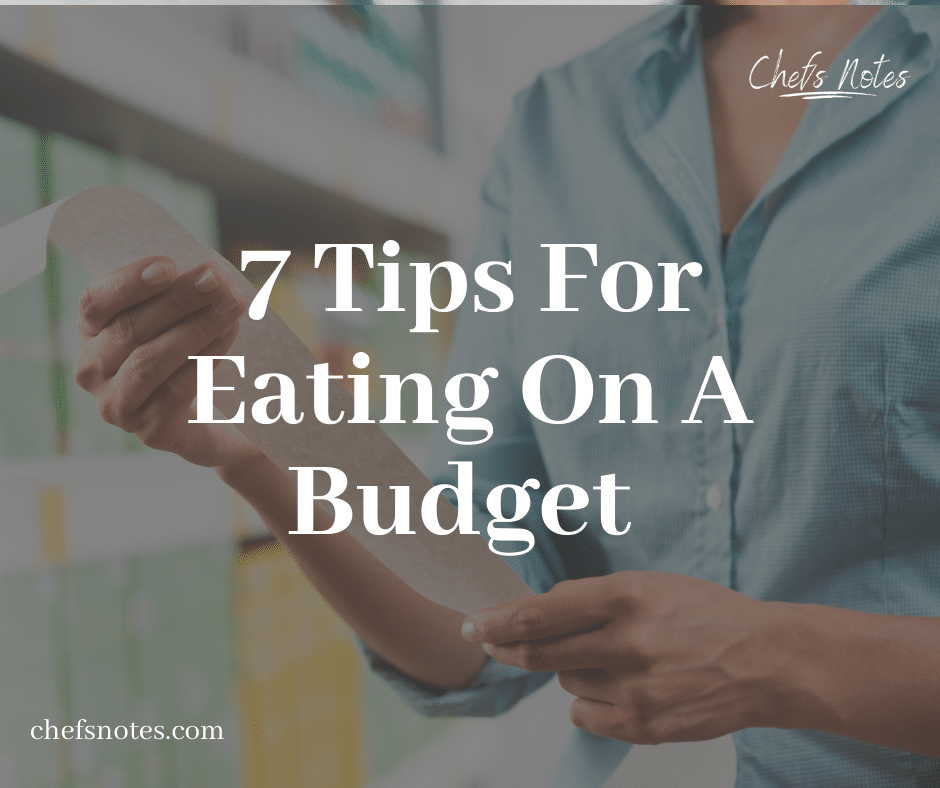

0 Comments